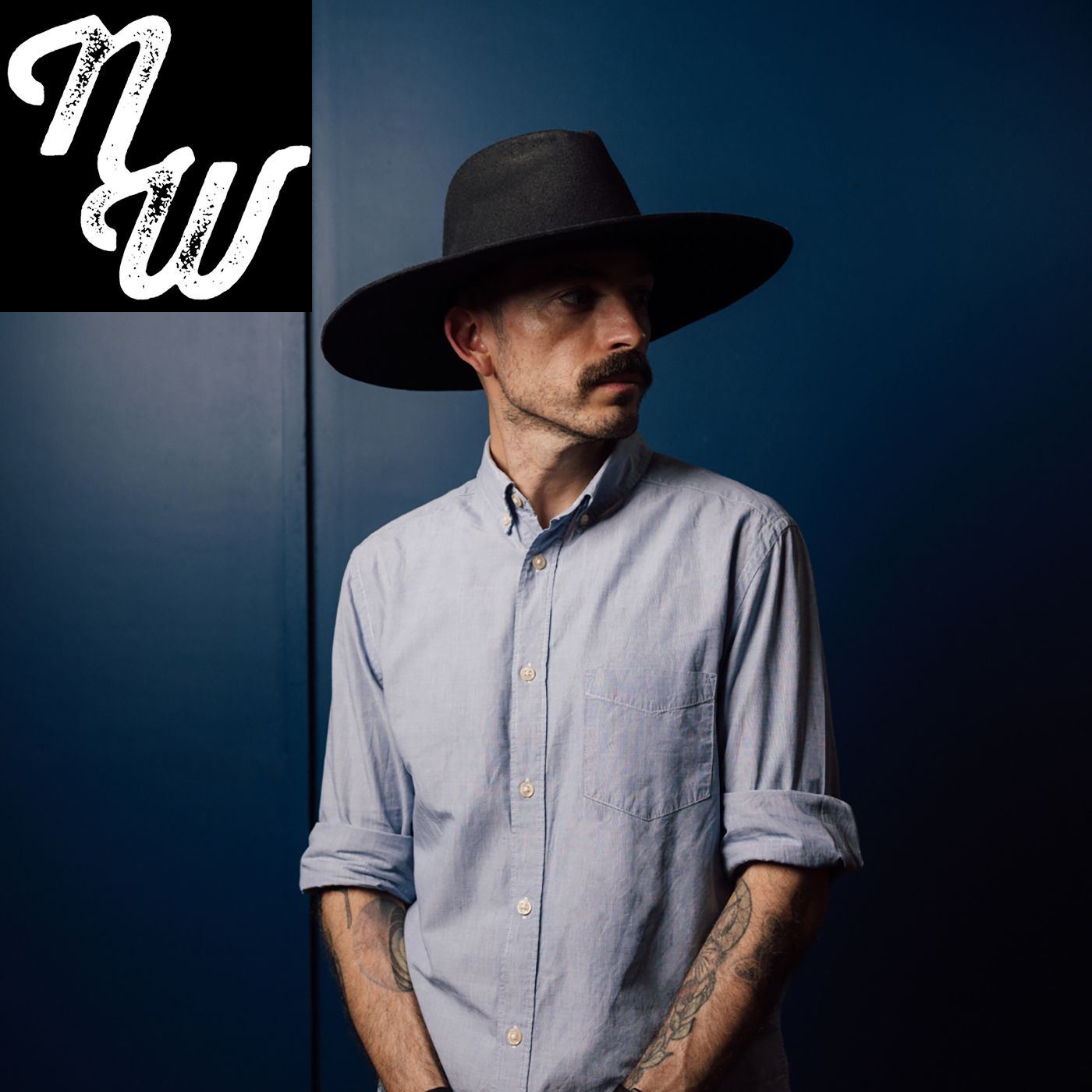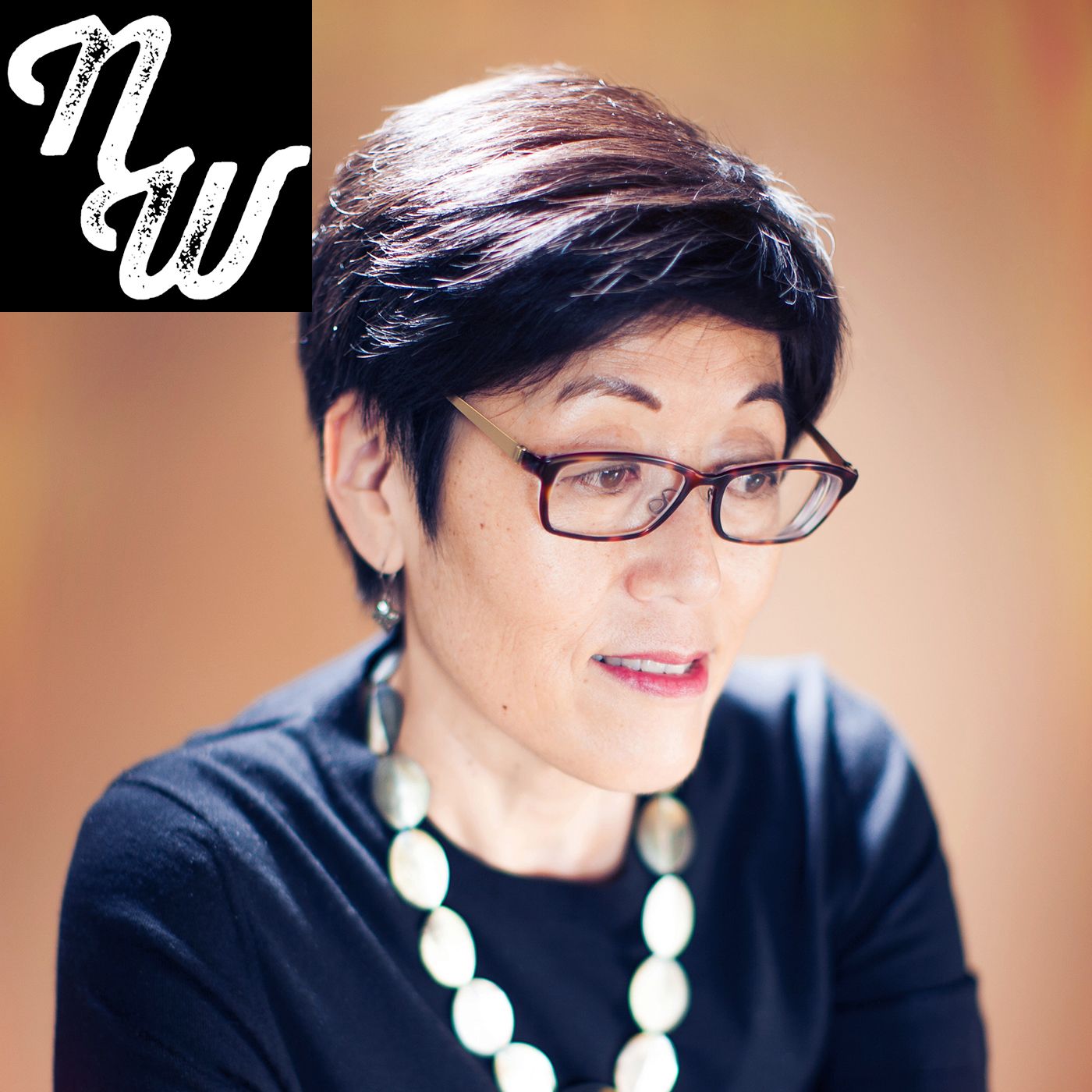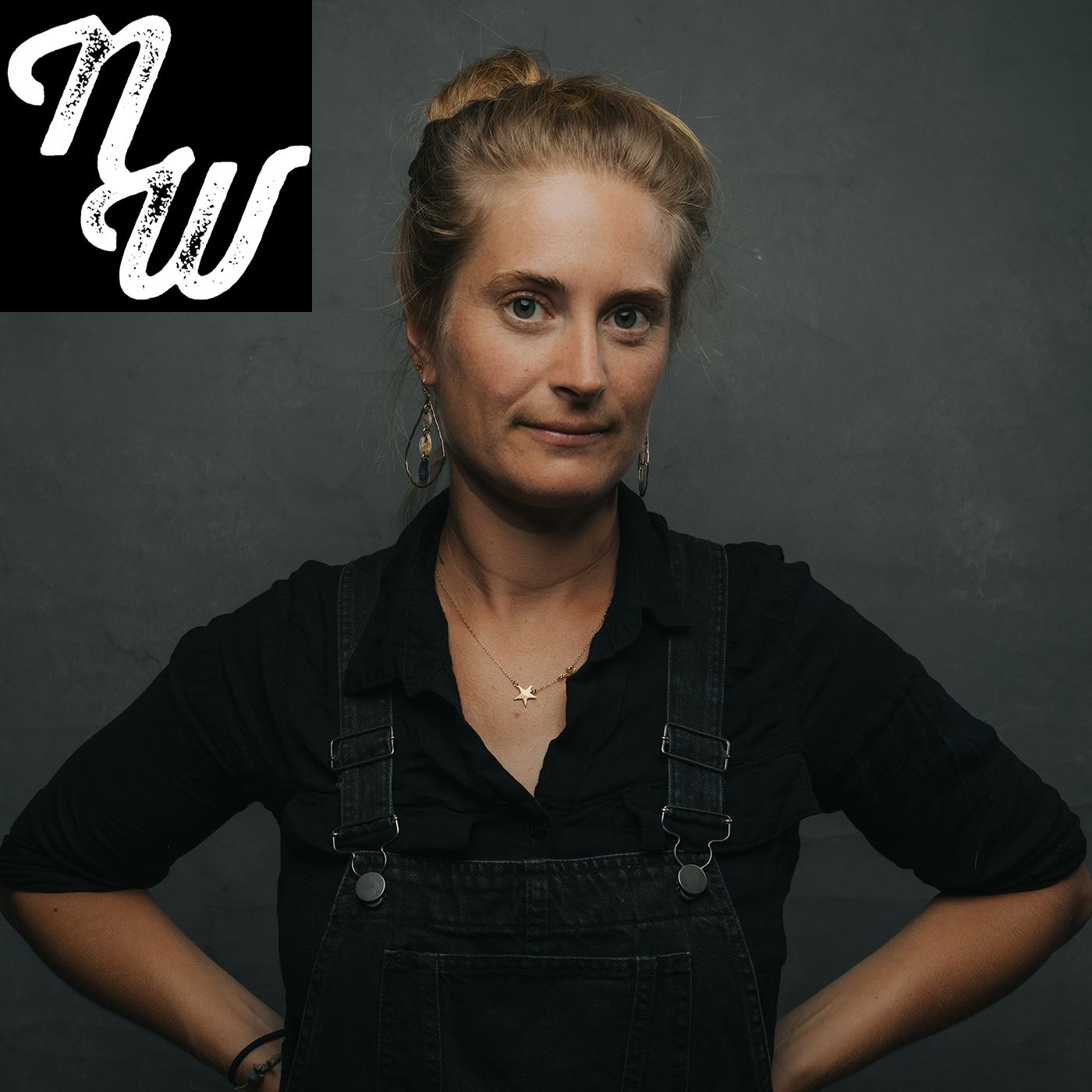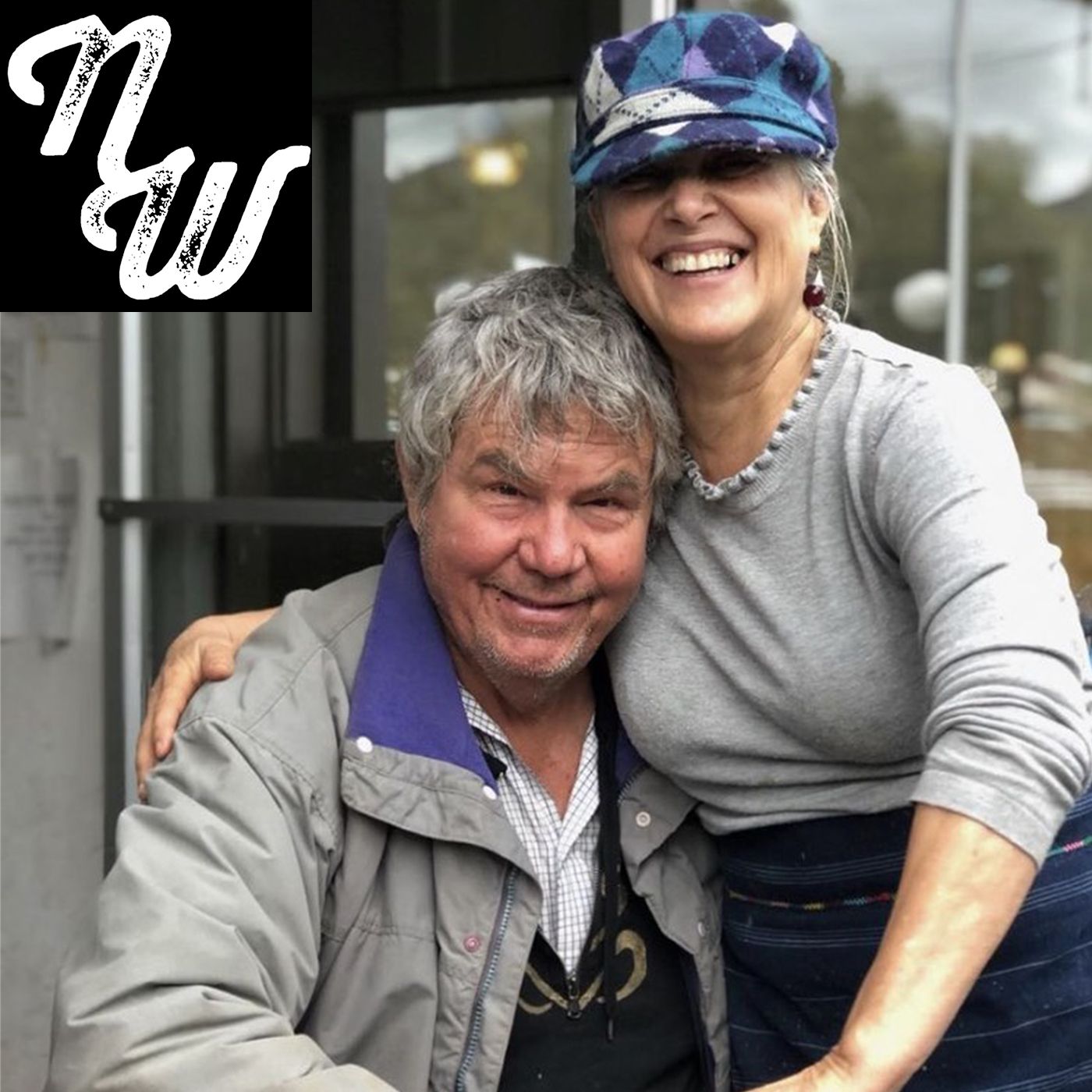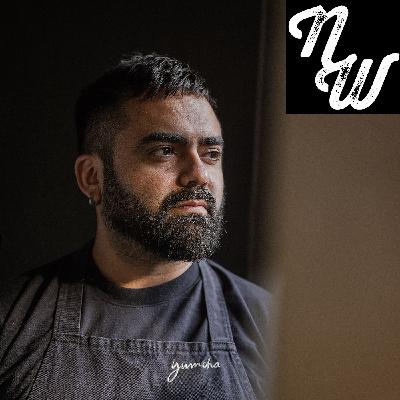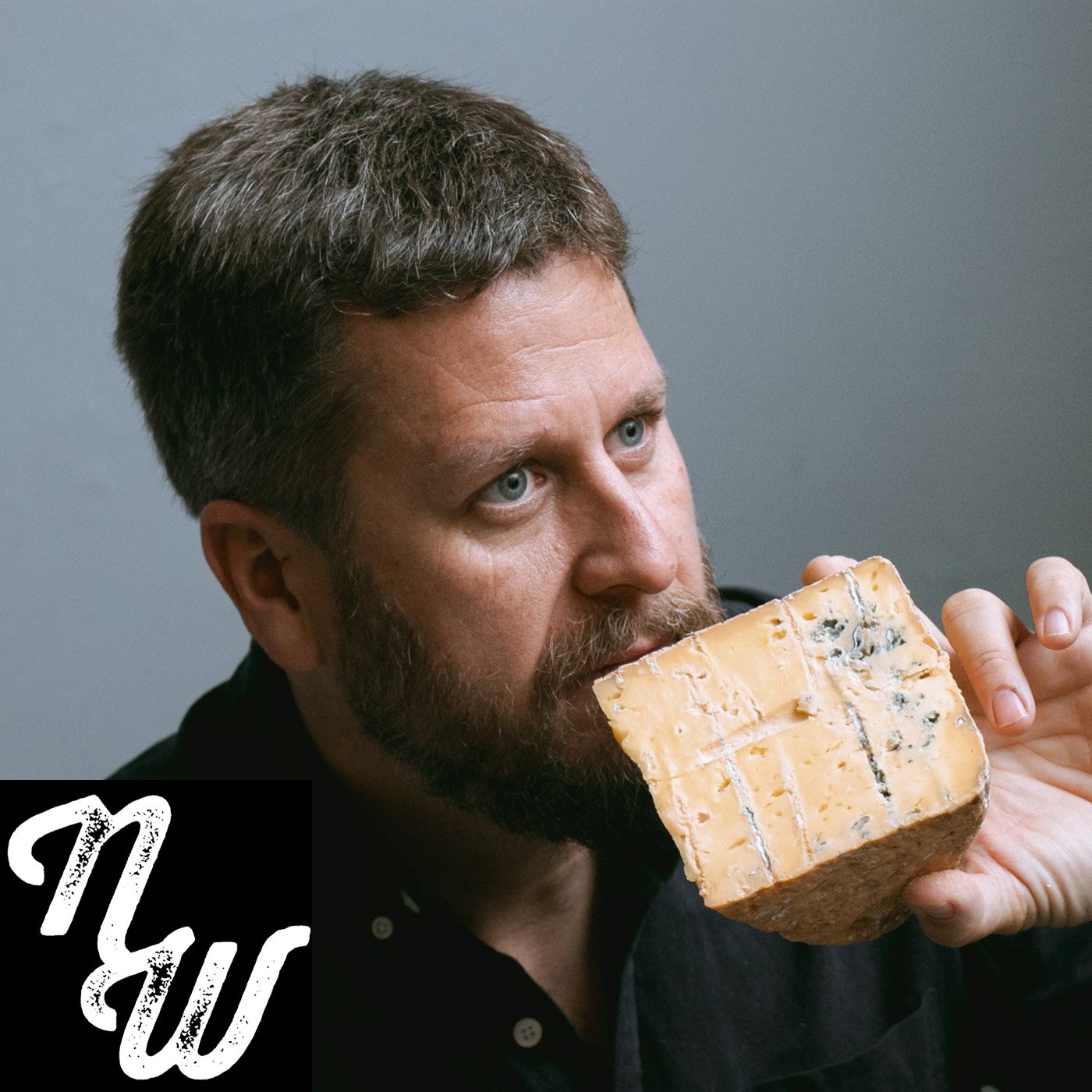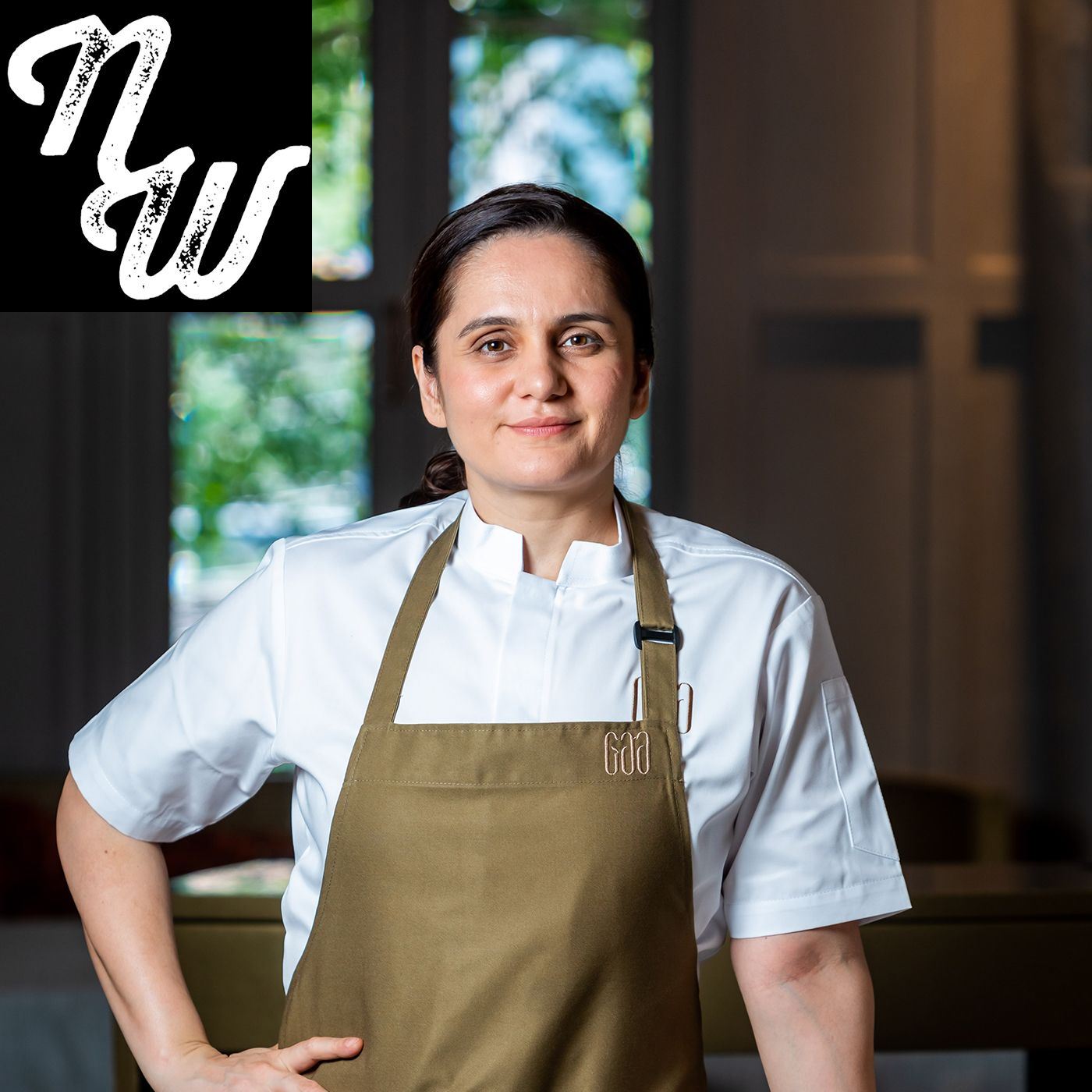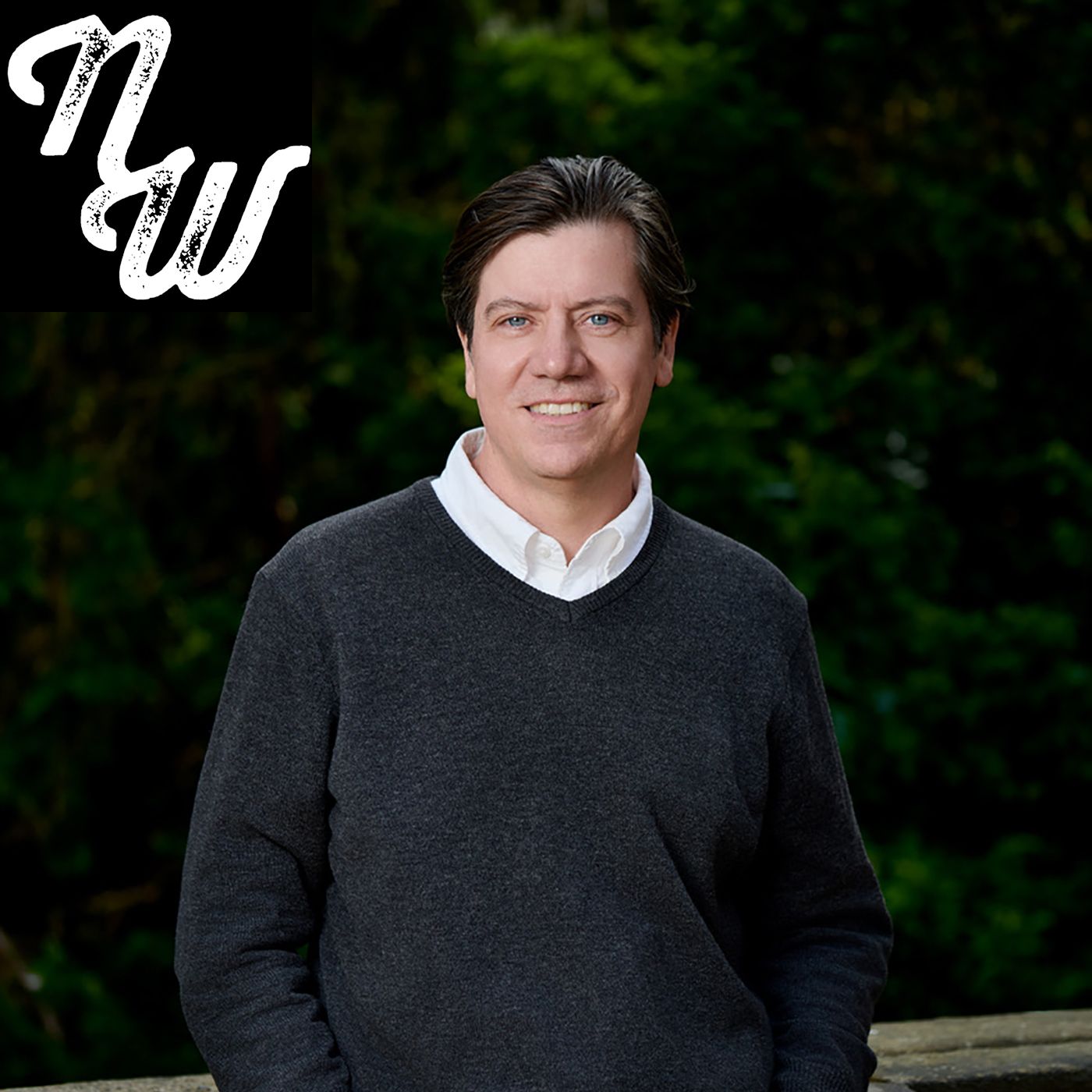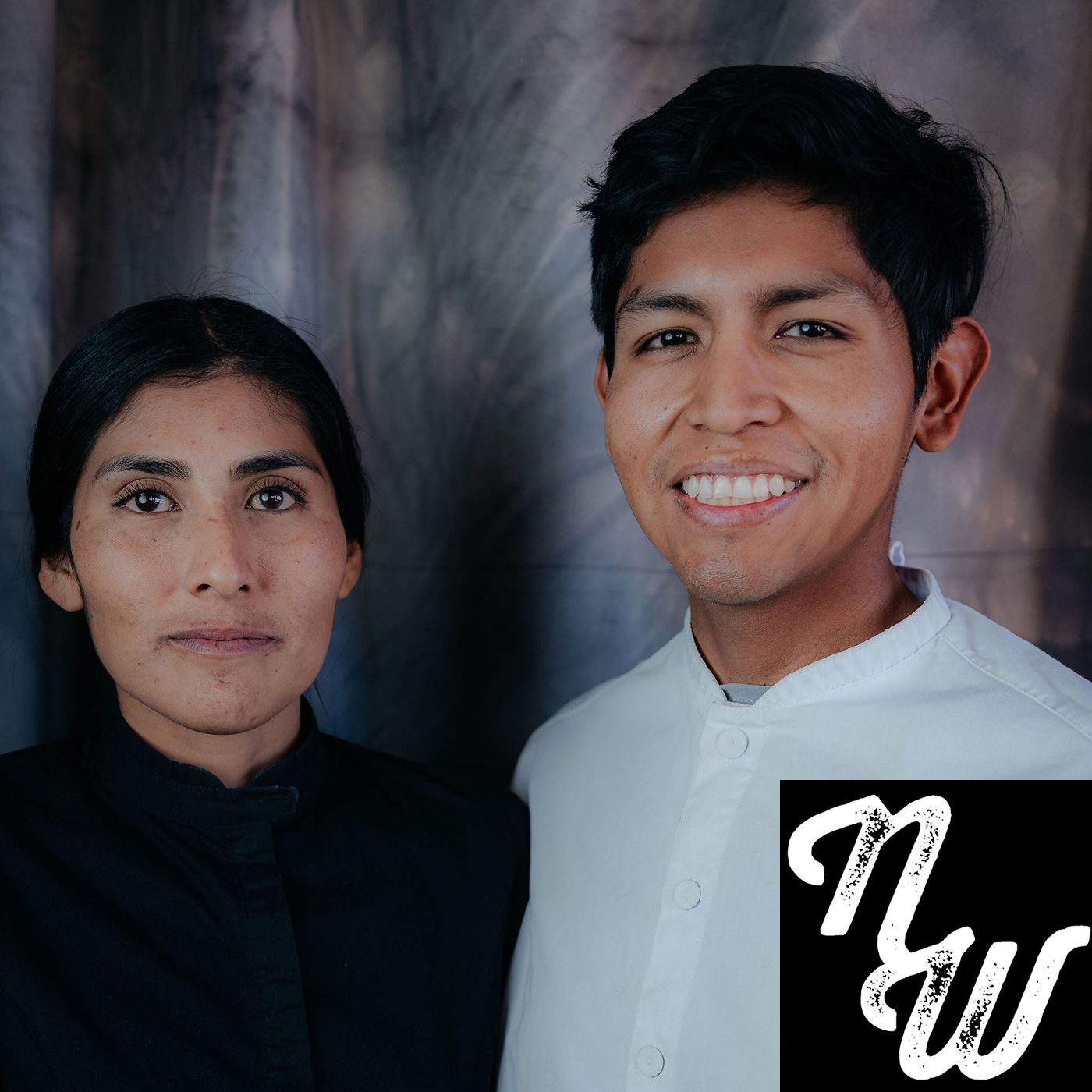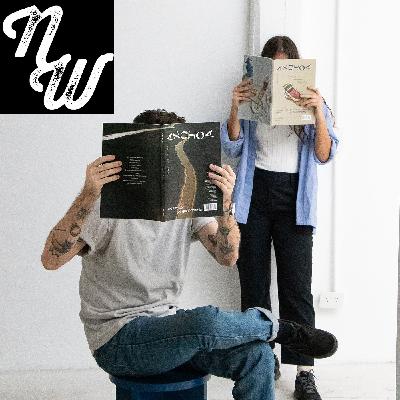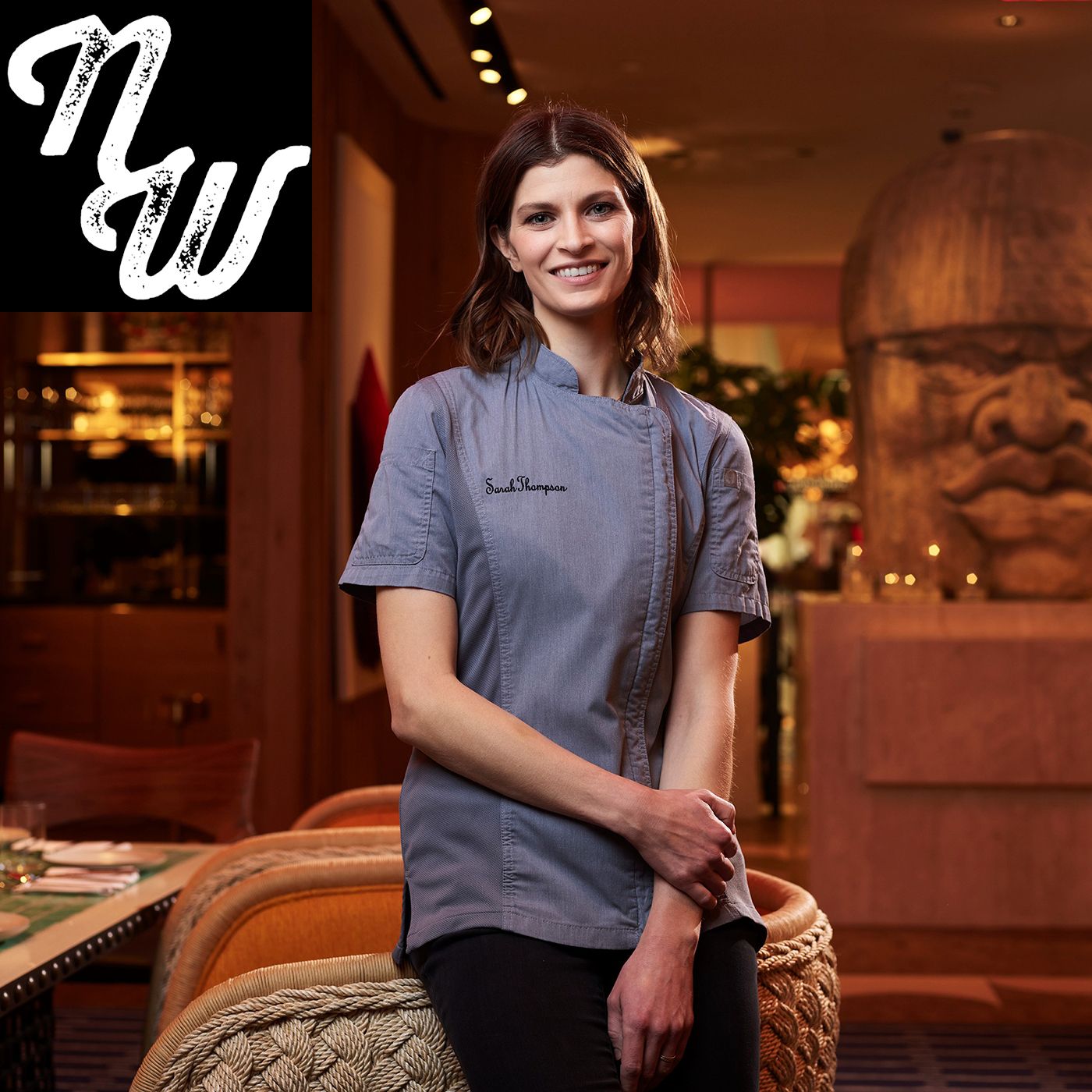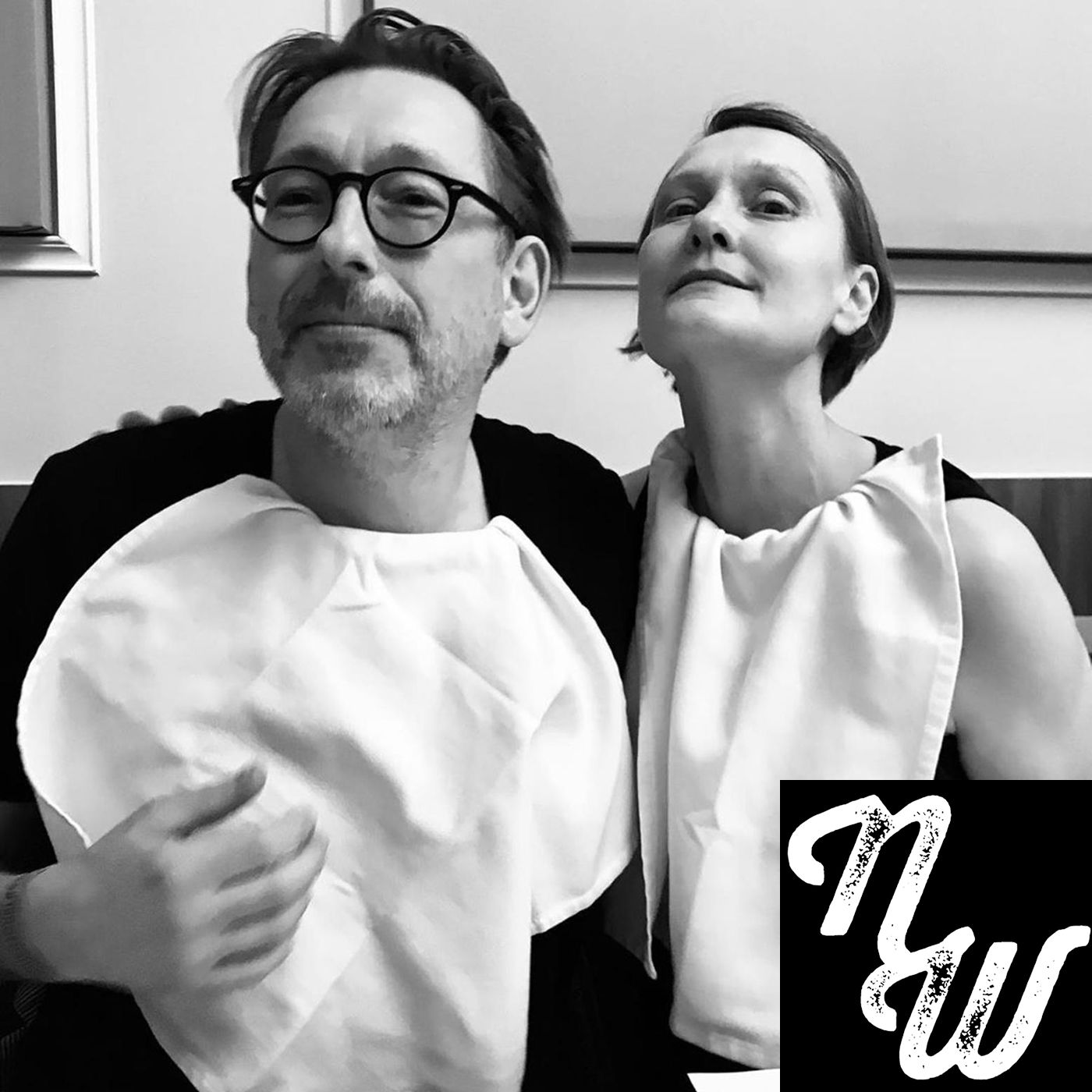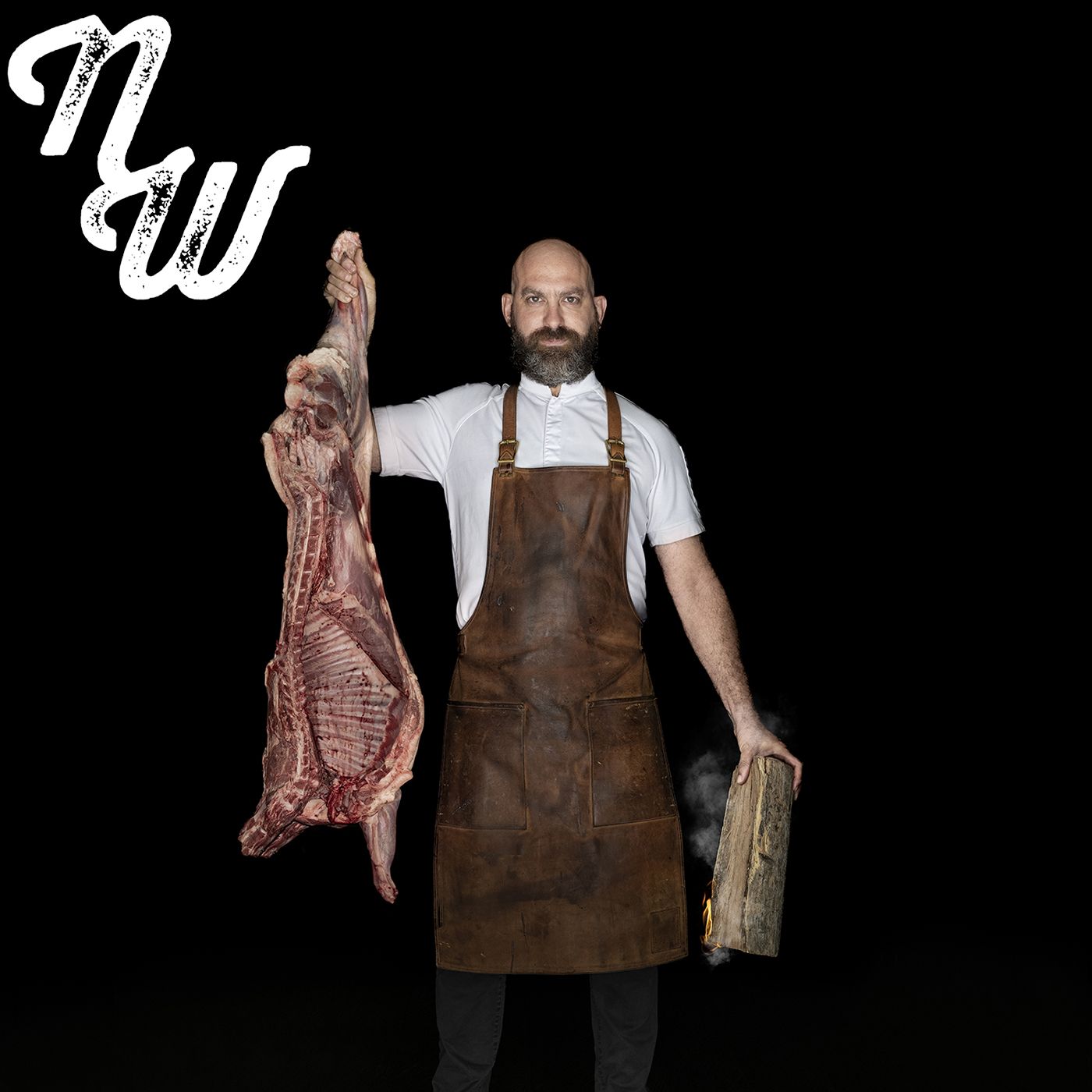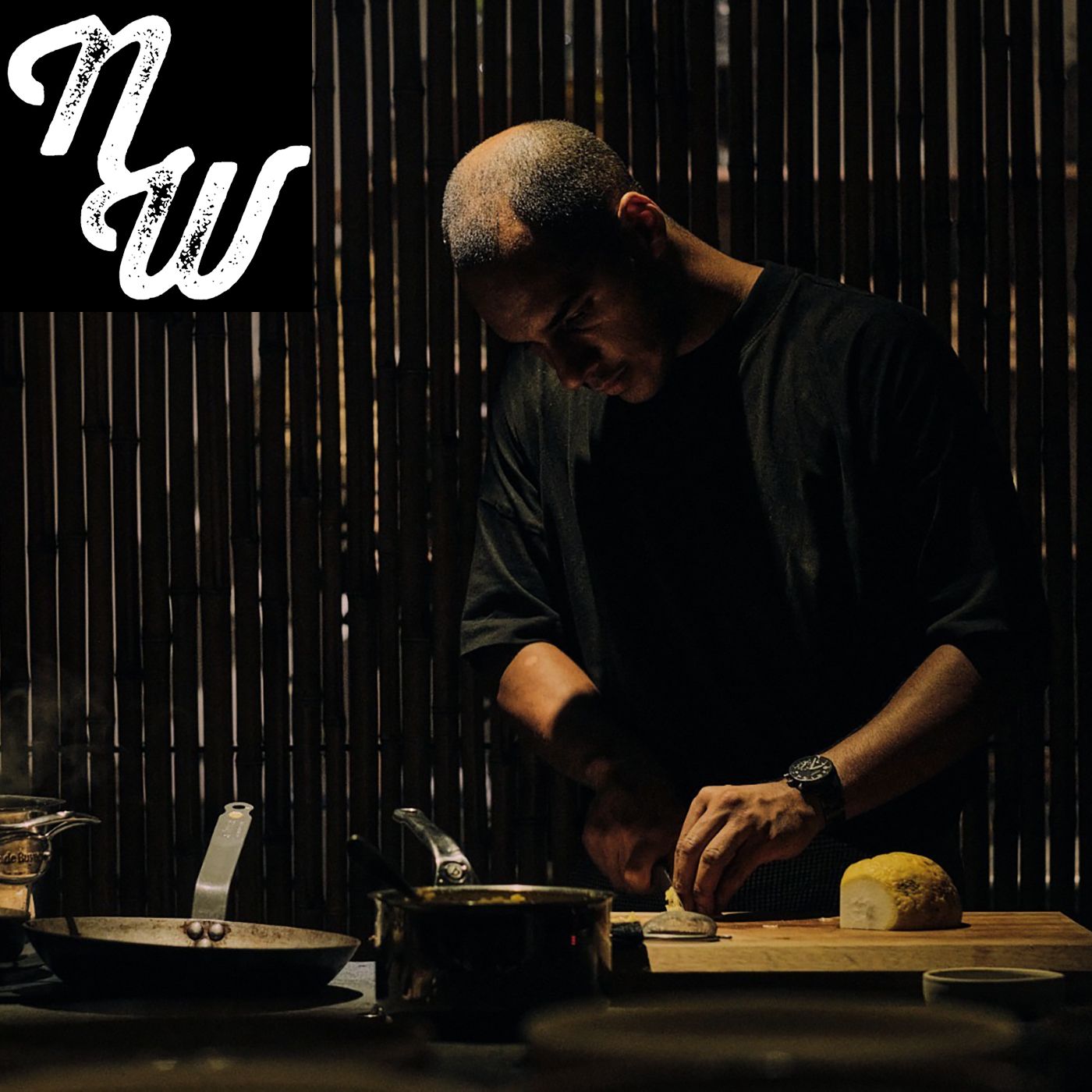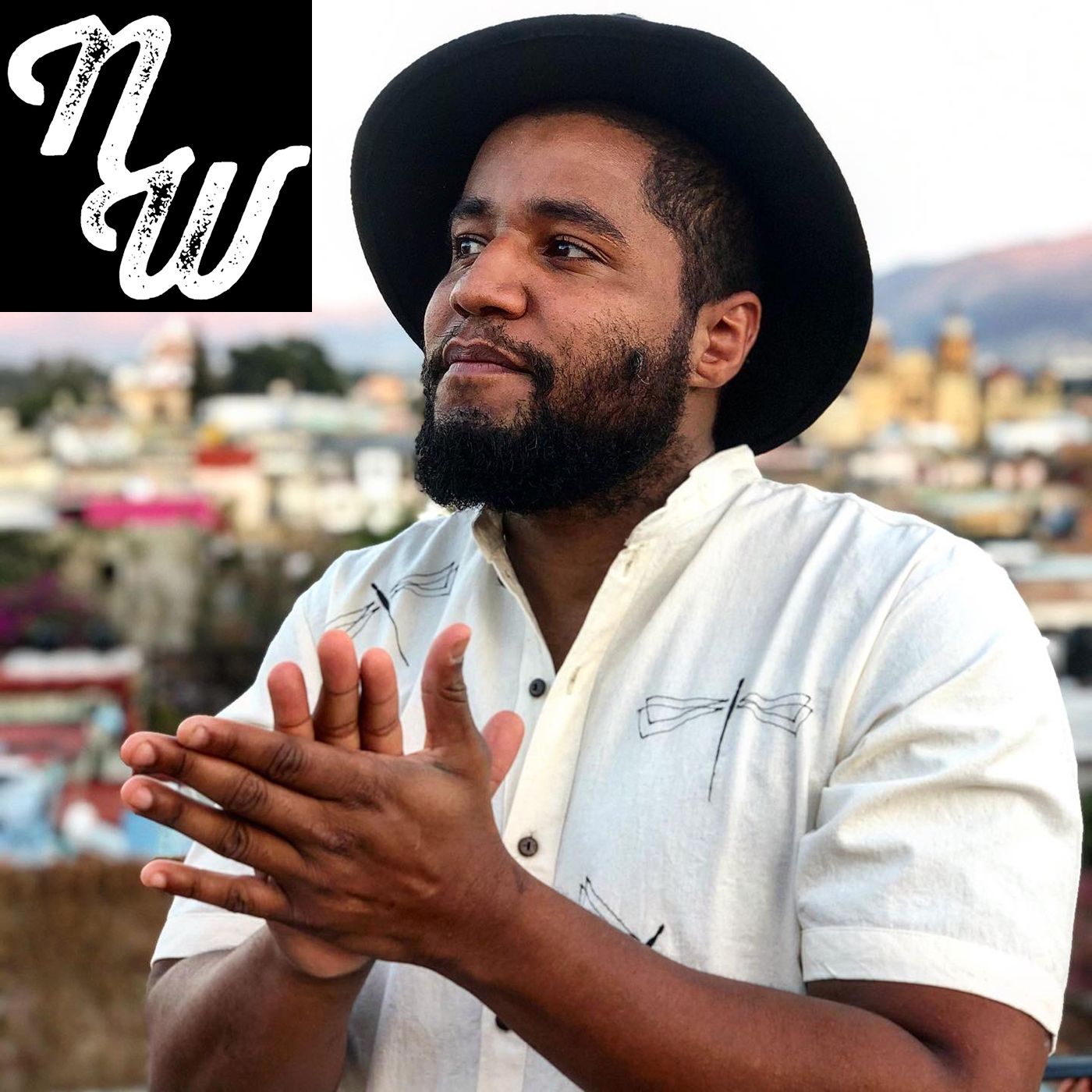Discover New Worlder
New Worlder

 New Worlder
New Worlder
Author: Nicholas Gill
Subscribed: 3Played: 14Subscribe
Share
© Copyright Nicholas Gill
Description
The New Worlder podcast explores the world of food and travel in the Americas and beyond. Hosted by James Beard nominated writer Nicholas Gill and sociocultural anthropologist Juliana Duque, each episode features a long form interview with chefs, conservationists, scientists, farmers, writers, foragers, and more.
119 Episodes
Reverse
I want to you to try to imagine an ancient lakebed where the decomposing aquatic life at its bottom was piled up within the lake and mixed with branches and other organic material to form islands. Now imagine farming on those islands. Imagine these farms being incredibly productive. So productive that the crops grown on them could feed hundreds of thousands of people. Not only do they feed at an incredible scale without depleting the nutrients in the soil, but they encourage additional life. With intervention, by humans becoming part of the ecosystem rather than dominating it, they actually encourage biodiversity. It sounds like the future, right? Right? Would it blow your mind to know that these farm islands were actually created 2,000 years ago in what is present day Mexico City? It’s shocking, right? Would it blow your mind even more if you know they still exist to this very day?These farms are called chinampas and the knowledge that was developed here and expanded on throughout the past 2,000 years continues in a place called Xochimilco, within the limits of Mexico City. Today’s guests are the brothers Lucio and Pablo Usobiaga, who founded Arca Tierra, a farm network that includes chinampas farmers, as well as their own farm, and farms from other traditional agricultural systems in and around Mexico City. They also opened the zero-waste restaurant Baldío in 2024, alongside the British chef Douglas McMaster of Silo.What these guys are doing and how they are doing it should not be underestimated. They are trying to change the conversation around words like peasant and campesino and turn them into the role models we should all look up to. They are creating a vibrant, alternative network of farmers and collaborators that places value on ancestral agricultural systems and those that are protecting them.What’s important to take away from this and I want you all to think about it into the new year, is how hopeful they are. They are blunt about the challenges ahead and all the awful things that will happen, but they believe in what they are doing. They believe in these farmers and ancient agricultural systems. They understand what it’s going to take to bring them back. I hope that by listening to people like Lucio and Pablo, you do as well. We really can do this, all of us, together.--Host: Nicholas GillCo-host: Juliana DuqueProduced by Nicholas Gill & Juliana DuqueRecording & Editing by New Worlder Email: thenewworlder@gmail.comRead more at New Worlder: https://www.newworlder.com
Gregg Moore is a ceramic artist who is best known for his work with Dan Barber at the restaurant Blue Hill at Stone Barns. The Glenside, Pennsylvania based artist is a professor of ceramic art at Arcadia University and also co-owns the ceramic studio Heirloom alongside his wife Jackie, which sells plateware influenced by agriculture and farmers’ markets.Why don’t we think of the plate with as much depth as we think of the food that sits on top of them? Not just how it holds the food on top or within it, but the materials they are made from and what they represent? This discussion really made me think a lot about the vessels we use to communicate food. It’s not every restaurant that can have a ceramicist like Gregg and give them the space to be creative, but for many that strive for something different it could be a missed opportunity.One of the signature elements he works with is bone, using mostly the femurs of cattle that live at Stone Barns. Using a late 1700s recipe by Josiah Spode, he breaks down the bones into a powder, which gets remade into plates and cups. What’s fascinating is they have done tests about the quality of the bones and it is directly related to how the cows live. A healthier, grass fed cow not injected with hormones has purer bones that result in better plateware. It really makes you think about what we are putting in our bodies.--Host: Nicholas GillCo-host: Juliana DuqueProduced by Nicholas Gill & Juliana DuqueRecording & Editing by New Worlder Email: thenewworlder@gmail.comRead more at New Worlder: https://www.newworlder.com
Shava Cueva is the Baja California, Mexico born photographer who created the book and platform Bebidas de Oaxaca. The self-published book, now in its second edition, and available in English and Spanish, documents an incredible 87 traditional drinks from the eight regions of the state of Oaxaca. They are drinks made from “fruits, seeds, rinds, leafs, sap, flowers, crusts, [and] stems,” and prepared “raw, roasted, cooked, fermented, distilled, boiled, ground, mixed by mortar and pestle, foamed, cold or hot.” The book is filled with beautiful imagery that show the time and care Shava takes when visiting these often remote, rural communities and it shows the richness of these drinks, which are often left out of conversations of Oaxacan food and are gradually disappearing.What’s especially fascinating is that Shava has no culinary background. In the interview we discuss how the Baja born photographer, who now lives in Australia, first became intrigued by Oaxaca’s traditional beverages. He had a vague idea of a project during the pandemic, but once he arrived to the state and started shooting, he realized how substantial the project could become. There was so many drinks that weren’t archived anywhere and he continues to document them. His website and YouTube channel continue where the books leave off, and the material just keeps coming. It’s an endless source of inspiration for him. I hope more people follow his lead.--Host: Nicholas GillCo-host: Juliana DuqueProduced by Nicholas Gill & Juliana DuqueRecording & Editing by New Worlder Email: thenewworlder@gmail.comRead more at New Worlder: https://www.newworlder.com
Peter Tempelhoff is a chef and restauranteur in Cape Town, South Africa. While Pete lived and worked in Europe and the US, and worked with Marco Pierre White and several other well-known chefs, hell fell in love with Japanese cooking many years ago and it changed how he saw South African ingredients, which is an ongoing evolution. His fine dining restaurant Fyn combines Japanese techniques with South African ingredients, though he also the more casual restaurants Sushiya and Ramenhead, and a vineyard restaurant in Constantia named Beyond. Another restaurant at the historic Boschendal Estate, called Arum, will open in November.Last year on a bit of a whim, while I was waiting on paperwork for my next book, I went to South Africa. Pete told me about a paleobotanist named Jan De Vynck that he was working with that was researching the cognitive development of homo sapiens in South Africa more than 100,000 years ago. The story was of particular interest to me, and Pete for that matter, because the story had everything to do with what homo sapiens ate. The species was near extinction, but the particular biodiversity of the Western Cape allowed the survive and then thrive to become the dominant species on the planet. I found it to be incredibly hopeful and a powerful reason why we need to protect biodiversity and I wrote a 10,000 word three part story on the New Worlder newsletter about it.This was my only time in South Africa. My only time south of Morocco on the African continent, and it was nothing like I expected. Aside of the straight up physical beauty of the Cape Town area, the extreme level of biodiversity and how it resulted in all sorts of ingredients new to modern kitchens was quite the surprise. Many of them don’t look, smell or taste like anything I’ve ever tried before. Pete’s restaurants are a good place to find them and he’s been building different gardens to support his needs and encouraging other farmers to grow them to take the pressure off of wild resources. I see South Africa as a place we’ll talk much more about in terms of gastronomy and restaurants in the years to come and it’s because of what’s native. --Host: Nicholas GillCo-host: Juliana DuqueProduced by Nicholas Gill & Juliana DuqueRecording & Editing by New Worlder Email: thenewworlder@gmail.comRead more at New Worlder: https://www.newworlder.com
Nancy Matsumoto is the author of Reaping What She Sows: How Women Are Rebuilding Our Broken Food System, which will be released in October but is available for pre-order now. The book is a collection of stories about women that are creating alternative food networks. They are building out local and regional supply chains in the face of overwhelming odds and the destructiveness of industrial agriculture. While the book traces how broken our global food system is, it’s quite hopeful. All of the women featured are doing something about it. They are making changes. They are building something.We talk a lot about supply chains, how long they are and the work that it takes to shorten them. We talk about how an obscure Eurasian grass called kernza is having a positive impact on landscapes in the north central US while being used to create beer. How cacao producers in Belize and Guatemala are getting organized to better their situation. If you want to be inspired in making the changes you want to see in the world, read this book. We also talk with Nancy about the art of writing. We actually have the same agent and have faced a lot of the same challenges in the media industry, which has become nearly impossible to navigate. Putting non-fiction narrative books like this together require tremendous amounts of time and patience, yet we do it because these are important stories to tell. Nancy has also written the books Exploring the World of Japanese Craft Sake and By the Shore of Lake Michigan, a translation of WWII-era Japanese concentration camp poetry. Again, the latest book is Reaping What She Sows: How Women Are Rebuilding Our Broken Food System. Order a copy or follow Nancy on her just launched Substack, Reaping, which follows some of the stories from the book. --Host: Nicholas GillCo-host: Juliana DuqueProduced by Nicholas Gill & Juliana Duque Recording & Editing by New Worlder https://www.newworlder.com Read more at New Worlder: https://www.newworlder.com--Host: Nicholas GillCo-host: Juliana DuqueProduced by Nicholas Gill & Juliana DuqueRecording & Editing by New Worlder Email: thenewworlder@gmail.comRead more at New Worlder: https://www.newworlder.com
Elspeth Hay is the author of the new book Feed Us With Trees: Nuts and the Future of Food. The book helps us understand how many in Western society lost their relationship to nut producing trees. It explains how integral trees such as oaks, chestnuts, black walnuts and hazelnuts are to forest ecosystems and how their nuts were once a staple in North American diets.Hay, lives on Cape Cod and has been reporting on food and the environment for the past 15 years with The Local Food Report, a segment that has aired on a regional New England NPR station. Despite growing up on a farm in Maine, it was a revelation when she found out that acorns were edible and it sent her down a rabbit hole of curiosities that reshaped her understanding of food production, not to mention how she understood the world. In our conversation, we talk about the things in the way of returning tree nuts into our food supply, from land rights to a focus on yields that do not account for external costs.Coincidentally, I’ve been on a nut tree rabbit hole myself for the past few years. It started with the chestnut trees I have on my land, which drop so many nuts each year I don’t always know what to do with them. Chestnuts have become a part of my seasonal diet, and I’ve now planted a few hazelnut trees as well. Meanwhile, I’ve been researching Brazil nuts for the book I’m working on in the Amazon, and in some communities I have visited, they remain a staple food. So the possibilities of how we can shift what we eat towards more sustainable solutions are a reality. Elspeth writes and talks about polyculture and how the yields of nut trees paired with other complementary crops are not far off from the amount of food produced in industrial agriculture, with few of the negative external factors.-- Host: Nicholas GillCo-host: Juliana DuqueProduced by Nicholas Gill & Juliana DuqueRecording & Editing by New Worlder https://www.newworlder.com Read more at New Worlder: https://www.newworlder.com--Host: Nicholas GillCo-host: Juliana DuqueProduced by Nicholas Gill & Juliana DuqueRecording & Editing by New Worlder Email: thenewworlder@gmail.comRead more at New Worlder: https://www.newworlder.com
Olivia Chase and Steve Sprinkel are the owners of The Farmer and the Cook in Ojai, California. What is The Farmer and the Cook? It’s a restaurant, café, bakery, farm market and community hub in the middle of Ojai, plus a 10 acre farm a few blocks away.The Farmer and the Cook opened in 2001, though Olivia and Steve have been at the center of the American organic food movement for decades, helping it grow from a radical counter-cultural idea in one small area of Southern California to a transformational influence on the American food system. Organic food, vegetarian and vegan food, farmers markets, farm to table – these are ideas that entered the American mainstream because of what started to happen in this area. Today, they are often buzz words, corrupted by industrial food. Then there are people like Olivia and Steve that have not wavered from their original goals. They have stayed true to their ethos, growing, distributing and serving nutritious food that is good for your body and doesn’t destroy the environment. They try to make it nutritious food affordable and accessible to anyone in their community, not just the wealthy Angelenos that make their way to the town on the weekends.In our discussion, where Juli was there on location, we talk about how the price of land has made it difficult for new farmers, but how organizations they are a part of, like the Ecological Farming Association and ALBA, are helping to train farmworkers, many of them Latin American, to improve yields and access land of their own. We talk about hopeful gains in seed saving, which is helping make agricultural diversity more resilient. They are also helping preserve seeds from Gaza so that they don’t disappear during the war and they can eventually be reestablished by Palestinian farmers.I’ve been thinking a lot lately about the time it takes food movements to have real impacts. We are sometimes taken by surprise at how quickly food systems can be disrupted. I’ve seen it happen rapidly in the two decades I have been researching food in Latin America. Sometimes we want things to happen in the other direction overnight, but it takes time. Seemingly small actions, like saving seeds and getting nice vegetables into the hands of consumers can have a strong impact as time goes on. It might take decades before you can see the change, maybe it’s after your bones are down in the ground, but someone must have the courage to start somewhere. --Host: Nicholas Gill Co-host: Juliana DuqueProduced by Nicholas Gill & Juliana Duque Recording & Editing by New Worlder https://www.newworlder.com Read more at New Worlder.--Host: Nicholas GillCo-host: Juliana DuqueProduced by Nicholas Gill & Juliana DuqueRecording & Editing by New Worlder Email: thenewworlder@gmail.comRead more at New Worlder: https://www.newworlder.com
Nicolás Tapia is the chef and owner of the restaurant Yum Cha in Santiago, Chile. Nicolás talks about how he became interested in tea during a trip to China and during a family style meal where everyone was drinking tea he was reminded of the Chilean concept of once, the evening tea and meal. That’s when the idea was planted in his head to create a restaurant where food and tea could be paired together, combining his cooking experience, Chilean ingredients and the influences from China and elsewhere in Asia where he continues to explore regularly.I mention this in the conversation, but when I first heard about Yum Cha I questioned whether it was going to work. A tasting menu with Asian techniques, Chilean ingredients and a tea pairing? It’s a risk. Even though there is a ton of tea consumed in Chile, more than anywhere else in Latin America per capita and even more than in China and Japan. Then I went and I was like, alright, he knows what he’s doing. It comes through in the interview. I think it’s a good example of someone following their curiosities to another part of the world with an open mind and doing something interesting with it what they learned, and continuing to learn, engage and create something new. I highly recommend a meal there if you are in Santiago. Or stop by the tea house he is about to open. Nicolás did the interview from a hotel room in La Paz, Bolivia, where he was doing an event later that week with the restaurant Phayawi, which I haven’t been to but I’ve heard great things. I’ll be in Bolivia in a few months and hopefully I’ll have time for it.Read more at New Worlder.--Host: Nicholas GillCo-host: Juliana DuqueProduced by Nicholas Gill & Juliana DuqueRecording & Editing by New Worlder Email: thenewworlder@gmail.comRead more at New Worlder: https://www.newworlder.com
Martin Rosberg is a natural cheesemaker that lives in Colonia del Sacramento, Uruguay, a small community across the Río de la Plata from Buenos Aires, Argentina. He is Argentine and once ran a boutique hotel and restaurant in Buenos Aires but moved away to find a quieter life on a small farm with his family. He built a few stilted houses that he still rents on Airbnb, then he started making breads and eventually a few cheeses to give to the guests there. He really fell down the cheese rabbit hole, however. This led him to the world of natural cheesemaking, which is kind of like the natural wine of cheese: using traditional methods with natural cultures and without expensive equipment. It’s essentially how cheesemaking was done for 8,000 years until a century ago when modern practices entered into the craft. Martin now makes 20 kinds of natural cheeses from his farm in Uruguay, several of them his own unique styles. He also teaches workshops on natural cheesemaking and gives tastings around the world, including at his farm.Martin has been a good friend of mine for 15 years or maybe. I’m not even sure anymore. He used to be clean shaven and wear suits. Now he is this cheesemaker on a farm with all these crazy cheeses. Anyway, he was leading a few workshops at the very beautiful Coltsfoot Valley Farm in Cornwall, Connecticut, which isn’t that far from me so I went and picked him up and he stayed at my house for a couple of days on his way back to New York City. One of the most Connecticut things ever happened on the drive: two cars got into an accident trying to navigate going in and out of a narrow-covered bridge. Back at my place we of course tasted some cheeses and drank wine, but we decided to do this somewhat sporadic podcast conversation from my barn where I always record, while Juliana was able to join by laptop set up in front of the couch. Martin was one of the first guests on this podcast and it’s always good to hear from him, but it was nice recording the conversation in person in the barn. He’s the first to do that and it felt like a studio. Maybe one day it could develop into one. It just needs some time, like a cheese.--Host: Nicholas Gill ( https://www.instagram.com/nicholasgill2 ) Co-host: Juliana Duque ( https://www.instagram.com/juliduk/)Produced by Nicholas Gill & Juliana DuqueRecording & Editing by New Worlder https://www.newworlder.comEmail: thenewworlder@gmail.comRead more at New Worlder: https://www.newworlder.com--Host: Nicholas GillCo-host: Juliana DuqueProduced by Nicholas Gill & Juliana DuqueRecording & Editing by New Worlder Email: thenewworlder@gmail.comRead more at New Worlder: https://www.newworlder.com
Garima Arora is the India born chef of the two Michelin star restaurant Gaa in Bangkok, Thailand. She is the only female Indian chef with two Michelin stars. Garima has been working tirelessly to awaken the transformative potential of Indian cuisine both in India and abroad for many years. She developed a non-profit called Food Forward India, that documents, discover and catalogue the diversity and complexity of Indian food and the culture surrounding it, and is also a judge on MasterChef India, one of the most wide-reaching culinary television shows on earth.In our conversation, we speak of how the perception of Indian food has changed since she opened the restaurant. I spent two months in the country when I was 25, traveling on 3rd class trains everywhere, going from the Himalayas in the north to Goa in the south, and the border with Pakistan in the west to Varanasi in the east. Aside of being one of the most impactful periods of my life, I tasted so many things that were new to me and I haven’t seen since. Indian food, the cuisine of a massive landscape with hundreds of ecosystems and more people than any other country on the planet, was, for many years, reduced to a handful of curries and breads outside of the country. It’s so vast and rich and has been bottled up within India for so long, but suddenly it’s starting to spread. This is very much a big moment for Indian food outside of India. Tresind Studio in Dubai was just awarded 3 Michelin stars. Semma in New York was named the best restaurant in the city by The New York Times. And within India there is a lot going on too, not just with fine dining restaurants, but at the street level there is an energy there that is growing by the day. This is a cuisine, sorry not a cuisine, but thousands of them, that have been overlooked for far too long.Aside of trying to juggle parenting with chef life and her early career as a journalist, Garima talks about her work at Gaa. She tells us about the historic Thai house that was moved in pieces to Bangkok and reassembled with the help of a modern architecture firm to create the setting of the restaurant. She tells us how she cooks the Thai fruit durian on a tandoor oven as her main course, which sounds like one of the most delicious things ever.READ MORE at NEW WORLDER.--Host: Nicholas GillCo-host: Juliana DuqueProduced by Nicholas Gill & Juliana DuqueRecording & Editing by New Worlder Email: thenewworlder@gmail.comRead more at New Worlder: https://www.newworlder.com
Maru Molina lives in El Salvador, living somewhat of a nomadic lifestyle. She has a weekly pop-up event called Cocina de Jardin, where the events are held in both wild and urban settings around the country. Maru's work on the project over the past five years is very impactful. I believe it is having an impact. She has been holding weekly events that connect consumers with healthy, nutritious food grown by local producers, often right on the farms. They are physically seeing, tasting understanding where their food comes from. She recently expanded the concept with Finca Sylvestris, an experimental farm on the slopes between two volcanoes, just outside of San Salvador. Aside of giving her new altitude ingredients to work with, she also has a formal space for Cocina de Jardín events, which occur there twice a month. It’s given her an entire new understanding of her work.It is a very pivotal moment in the history of El Salvador. Even though there are serious concerns in the way the government has behaved itself, the country has opened up wildly and people are genuinely optimistic. I saw it the last time I was there I saw it. I felt it. It was as if a heavy burden had been lifted. As Maru and I discuss, this moment is an opportunity to build something better and lasting because it might not come again. --Host: Nicholas Gill ( https://www.instagram.com/nicholasgill2 ) Co-host: Juliana Duque ( https://www.instagram.com/juliduk/)Produced by Nicholas Gill & Juliana DuqueRecording & Editing by New Worlder https://www.newworlder.comEmail: thenewworlder@gmail.comRead more at New Worlder: https://www.newworlder.com--Host: Nicholas GillCo-host: Juliana DuqueProduced by Nicholas Gill & Juliana DuqueRecording & Editing by New Worlder Email: thenewworlder@gmail.comRead more at New Worlder: https://www.newworlder.com
Evan Rail is based in Prague, in the Czech Republic and is prolific food and travel writer, and has covered beer and spirits for many years. His latest book is called The Absinthe Forger: A True Story of Deception, Betrayal, and the World’s Most Dangerous Spirit.Evan and I have been crossing journalistic paths for many years. We both have written for the New York Times Travel section for a long time and we also have an interest in food and drink, though in very different parts of the world. But we now have the same agent and last year, said agent, sent me a copy of Evan’s new book before it came out and I couldn’t put it down.For one, absinthe is this intriguing spirit and I’ve always been fascinated by it. It has this rich history that inspired all kinds of great art, but then it got banned in much of the world a century ago and there’s always this desire for things that we cannot have. The book is part history lesson about the absinthe story and part true crime novel about this forger that was creating and selling what he alleged were highly sought after expensive pre-ban bottles of absinthe. Evan describes this entire absinthe underground that exists, this community of enthusiasts who want to taste history, and how actual lost bottles are occasionally being tracked down and being rediscovered in chateaus and estate sales. It’s a great read and I highly suggest getting a copy.Read more at New Worlder.--Host: Nicholas GillCo-host: Juliana DuqueProduced by Nicholas Gill & Juliana DuqueRecording & Editing by New Worlder Email: thenewworlder@gmail.comRead more at New Worlder: https://www.newworlder.com
Carolina Colque and Sergio Armella are the owners of Ephedra Restaurant outside of San Pedro de Atacama, Chile. Let me be clear when I say that this is a very unlikely restaurant. Two young, local Atacameños with no cooking experience, have opened a tasting menu restaurant in the Atacama Desert, the driest place on earth. It’s not even in the main town, San Pedro de Atacama, but in an ayllu, a traditional community a dozen kilometers away. I urge you to just go to their Instagram page right now and look at the food they are making and the ingredients they are working with. It will blow your mind.The Atacama Desert, in the far north of Chile, is a special place. I have been there a few times over the years. The scenery is unreal, almost lunar at times, but it is the flavors there that have always excited me. In a place with little rain, most of the plants grow slowly, into large shrubs with brittle branches that develop one-of-a-kind flavors. There are also fruit trees, leguminous pods and fragrant flowers that only come out when there is a hint of moisture in the air. This is the kind of landscape Carolina and Sergio are working with.Before starting the restaurant, Sergio’s cooking experience consisted of a Neapolitan pizza business they tried out during the pandemic, then he staged at Geranium, the 3 Michelin star restaurant in Copenhagen, which is extremely technical, for a few months. What makes Ephedra special is their will to create a distinct experience in the place they are from. These unique ecosystems, not to mention the cultures that support them, are what makes Latin American food special.Read More at New Worlder.--Host: Nicholas GillCo-host: Juliana DuqueProduced by Nicholas Gill & Juliana DuqueRecording & Editing by New Worlder Email: thenewworlder@gmail.comRead more at New Worlder: https://www.newworlder.com
Bruna Fontevecchia and Max Wilson are the cofounders of the food magazine and platform Anchoa. The magazine, which began in Argentina, has tried to create a space for deeper stories about food in Latin America. There is little to no mention of fine dining chefs or restaurant rankings. The magazine covers anthropology and ecology with food, the things that we eat and drink and how they are made, as the connecting tissue that unites them all. Bruna is the editor and Max is the designer and as you will hear, the process in building each issue is very organic and flows with the rhythm of the region, which is in constant flux.While the magazine’s coverage began in Argentina, where Bruna is from, it has gradually spread to rest of Latin America. Plus, the last two issues, #4 and the just released #5, are bilingual, in both English and Spanish. Part of that decision is to get more people to read it, though part of it is logistical, in just getting it on the shelves of bookstores and newsstands in different parts of the world. Anchoa is part of a new wave of gastronomic journalism in the region, where small print magazines are finding life as large print publications gravitate more towards digital publishing. There’s also Chiú in Ecuador that started recently, as well as several other small publications.In the interview they describe the challenges in exposing people to these kinds of stories and are continually experimenting with new forms. They have a digital only part of the magazine and a podcast that releases sporadically. They also just released a 20-minute short film called El Sueño del Vino, about ancestral winemaking methods in northern Argentina, in Cafayate, and the battle to preserve them. Please check out what they are doing. Pick up issue #5, I even have a photo essay in it about fish in the Peruvian Amazon. Request your local bookstores with lively food sections to stock it. The more engaged the world can become with the depths of cuisine in the Americas, the better it will be for all of us.Read more at New Worlder--Host: Nicholas GillCo-host: Juliana DuqueProduced by Nicholas Gill & Juliana DuqueRecording & Editing by New Worlder Email: thenewworlder@gmail.comRead more at New Worlder: https://www.newworlder.com
Sarah Thompson is the chef of Casa Playa in the Wynn Hotel in Las Vegas, Nevada. She was born in Boston, Massachusetts and is a Culinary Institute of America graduate who spent many years working in New York City at restaurants like Marea and Alder, but when taking a job with Enrique Olvera and Daniela Soto-Innes at Cosme, she fell in love with Mexican cuisine. When that restaurant wanted a variation of it called Elio in Las Vegas she was tapped as the executive chef. They opened right at the same time the pandemic hit, so after months of openings and closings and instability on the Las Vegas strip it closed. However, she was able to convince the Wynn to let her take over the space and serve her form of Mexican cooking.Casa Playa serves coastal Mexican food, but it’s not attached to any specific region. She has no sentimental background with a grandmother in Michoacán or anything like that, so she doesn’t try to insinuate that she does and just lets the flavors work together as she sees fit. She even whips the masa for her tamales with coconut oil. It’s a very particular environment, running a restaurant inside of a casino. The way people dine is different. They often come in large groups. She has a late-night taco menu for those that want to stop in for a quick bite before during or after going to a club or some kind of attraction. The lighting is beyond her control at times. These unique attributes also give her an opportunity to do things a little differently. It’s a really fascinating world in Las Vegas. I know it seems like a place I wouldn’t like, but I’ve never really gone there for all of the money and excess and nightlife that it has a reputation for. I’ve always appreciated just the weirdness of Las Vegas which is everywhere, though sometimes you have to peel back what’s on the surface.Read more at New Worlder.--Host: Nicholas GillCo-host: Juliana DuqueProduced by Nicholas Gill & Juliana DuqueRecording & Editing by New Worlder Email: thenewworlder@gmail.comRead more at New Worlder: https://www.newworlder.com
Based in Malmo, Sweden,Lotta & Per-Anders Jörgensen are the founders of the legendary food magazine Fool. Lotta is an art director and Per-Anders, or P.A. as I have come to call him, is a photographer. This is a magazine that launched in 2012 and has put out, thus far, 8 issues, very sporadically. It has been a few years since. The last issue, but as they reveal in the episode, there will be a #9.Aside of its unpredictable publishing schedule, Fool is a rare kind of magazine. In a world where everything moves so fast, where writing about food is mostly oriented towards minuscule bits of information on social media that keep coming at a rapid pace, one after the other, Fool is slow. It’s thoughtful. It’s reflective. It’s stories are about interesting humans that work in food and their ideas, regardless of how well known they are. It’s creative, with beautiful illustrations and photography, and stories that have always gone a little bit deeper than anywhere else. I had the pleasure of writing a few feature stories there and there was never any indication of what the word count should be. Just make it as long as you think it should be, they would say. That kind of collaboration is a dream for a writer or contributor of any sort. When you pick up an issue, you can read it like a book. A decade later, the stories remain relevant.Lotta and PA also create books, such as the Burnt Ends book, which we talked about with that restaurant’s chef, Dave Pynt, in the previous episode. They’ve also worked with Andoni Luis Aduriz of Mugaritz, and quite a few other truly iconic chefs. There is also a documentary series they have created that they will launch soon, or at least soonish, or when it feels right. Anyway, their work has always been a big inspiration for me so it was a pleasure to have them on.READ MORE AT NEW WORLDER.--Host: Nicholas GillCo-host: Juliana DuqueProduced by Nicholas Gill & Juliana DuqueRecording & Editing by New Worlder Email: thenewworlder@gmail.comRead more at New Worlder: https://www.newworlder.com
Dave Pynt is the Perth, Australia born chef of the restaurant Burnt Ends in Singapore. Burnt Ends, open since 2013, which followed a pop-up in London the year before, is has been one of the restaurants driving the global conversation around modern barbecue, which, as Pynt explains, is barbecue where anything goes. It’s not attached to tradition, to history or to borders. It simply means a focus on cooking over fire and the influences are many. It doesn’t even necessarily mean cooking meat as you might assume as with the word barbecue as it is used in the United States.Pynt recently published a book about the restaurant, which is unlike almost any cookbook I’ve seen before. It’s a straightforward life story with recipes. Much of the history is written and illustrated like a graphic novel. There are interviews and thoughts about technique surrounding cooking with fire. As we discuss in the interview, he didn’t even want to include recipes, but he ultimately caved, but those recipes are written just as they are used in the restaurant, rather than trying to dumb them down for a home kitchen. He worked with mutual friends Pers-Anders and Lotta Jorgensen, who you might know from the Swedish food magazine Fool, in creating the book, which they self-published so they didn’t have to make any compromises in the style.We discuss the path he took from working around the world, the time he spent traveling in South America, how Asador Etxebarri impacted his life and the change in set up from his previously small restaurant in Singapore’s Chinatown to a much bigger spread with multiple concepts on Dempsey Hill.READ MORE AT NEW WORLDER.--Host: Nicholas GillCo-host: Juliana DuqueProduced by Nicholas Gill & Juliana DuqueRecording & Editing by New Worlder Email: thenewworlder@gmail.comRead more at New Worlder: https://www.newworlder.com
Meghan Flanigan & Mario Rosero are the owners of the restaurant Prudencia in Bogotá, Colombia. Prudencia is a timeless restaurant in La Candelaria, an old building reformatted by the architect Simón Veléz. It’s only open for lunch and when you eat there it feels like you’re hanging out at a friend’s house. You are free to move around the place. To take a snack off their homemade grills in the back garden or to linger for far longer than you might anywhere else. There’s no specific style of food you can point too, other than they mostly cook over wood and use Colombian ingredients. An idea for a plate might happen anywhere, sometimes a book, and not necessarily a cookbook.You’ll hear in the interview how everything about their process seems counterintuitive about how restaurants are supposed to be run. For example, they pay their staff well above average to the point that they hardly ever leave, plus post-pandemic they raised wages and menu prices significantly while reducing the capacity. The menu is never the same, changing every single week. Prudencia is a restaurant that thinks a lot about balance. About human balance. Maintaining working relationships. The nutritional balance you feel when dining there and how your body feels afterward.Mario says, “I don’t think we can go back to what did pre-pandemic. To sell the most affordable quality at the highest volume you can do.”They talk about their future plans, which includes closing the restaurant, very soon actually, and taking a long sabbatical, taking a step back and reevaluating everything, before completely reinventing themselves. Whatever it is I’m excited for it.READ MORE AT NEW WORLDER--Host: Nicholas GillCo-host: Juliana DuqueProduced by Nicholas Gill & Juliana DuqueRecording & Editing by New Worlder Email: thenewworlder@gmail.comRead more at New Worlder: https://www.newworlder.com
Olivier Bur is the chef and owner of the restaurant Casarré in the city of Santo Domingo in the Dominican Republic. Casarré is unlike any other restaurant I’ve heard of in the Caribbean. It’s a fine dining restaurant, at least in the sense that it serves 7 to 10 courses and a pairing, even though it does it in a casual way. There are of course many other fine dining restaurants in the Caribbean too, but unlike everywhere, Casarré is defined by its limitations as much as it is abundance. They don’t use flour, milk or eggs and instead find alternatives within the natural environment. They don’t serve wine in the pairing, as it isn’t produced on the island, and instead make different distillations like Mamajuana and source Clairin, an unaged sugarcane rum from Haiti, which needs to be bottled in Europe for it to be legally sold in the DR. They cook on a rustic wood fire, as it is done in the countryside, shunning most modern cooking equipment. It’s a fascinating approach in a region that needs some disruption.Olivier was born and raised in Switzerland with his Swiss mother making typical Dominican foods for him every day. He still felt disconnected from Dominican food and life there, but as he became a professional cook, working in kitchens around Europe and Latin America, including Pujol and Noma Mexico, he gradually gravitated more and more to the island. After a few pop ups and research trips (which he continues to write about), he moved to Santo Domingo and began creating a network of collaborators. Not just suppliers and culinary friends, but artisan craftsmen of every sort. Casarré is a restaurant that tells the story of and immerses you in Dominican culture in a really profound way. And as you will hear in this interview, he has the right temperate and patience for it to work.Read more at New Worlder.--Host: Nicholas GillCo-host: Juliana DuqueProduced by Nicholas Gill & Juliana DuqueRecording & Editing by New Worlder Email: thenewworlder@gmail.comRead more at New Worlder: https://www.newworlder.com
Bryan Ford is the author of the new book Pan Y Dulce: The Latin American Baking Book. Bryan is a baker and a very good one, and I think he’s looking at Latin American breads unlike anyone else. His first book, New World Sourdough, released right in the middle of the pandemic was a giant hit and it’s one of my most used baking books. It’s good practical advice at making better sourdough and as I mention in the conversation, his persona makes it less intimidating. At least for me. I find bread intimidating sometimes because it takes a while to make and I found it easy to mess up, especially when I first started making it. The new book, Pan Y Dulce, goes deep into the traditional breads of Latin America and I’m excited to use it. There are recipes for things like Peruvian pan chuta, pizza like fugazettas from Argentina, cassava breads, and other types of baked goods that don’t get much attention stateside. For a lot of these traditional breads that are rarely made with wild yeasts these days, he includes sourdough options. I’m especially excited to test this out as so many of these breads have so much potential made in this way.Ford was born in the Bronx to Honduran immigrants and raised in New Orleans. He was an accountant that liked baking and started to make a wholesale business out of it on the side. When he made a Honduran pan de coco, at his mother’s request, his blog Artisan Bryan suddenly exploded. He is the the host of Magnolia Network’s Baked in Tradition and The Artisan’s Kitchen, and you’ve probably seen him on some other shows on Netflix and elsewhere. Aside of the new book Pan Y Dulce, he also launched a Substack newsletter last year, also under the name Artisan Bryan. Despite his growing popularity, he’s not afraid to talk about things like slavery and colonialism, which I find refreshing. It seems like you are supposed to ignore history if you gain some mainstream traction. These things have had an obvious impact on breadmaking in Latin America, so of course he, as an Afro-Honduran acknowledges them, right in the first pages of the new book. He does it in a way that still celebrates the recipes, though some editors might be scared away by it. I personally appreciate the way he does it. It would be stranger to me if he didn’t mention these things. So, show your support and buy the book.READ MORE AT NEW WORLDER.--Host: Nicholas GillCo-host: Juliana DuqueProduced by Nicholas Gill & Juliana DuqueRecording & Editing by New Worlder Email: thenewworlder@gmail.comRead more at New Worlder: https://www.newworlder.com




